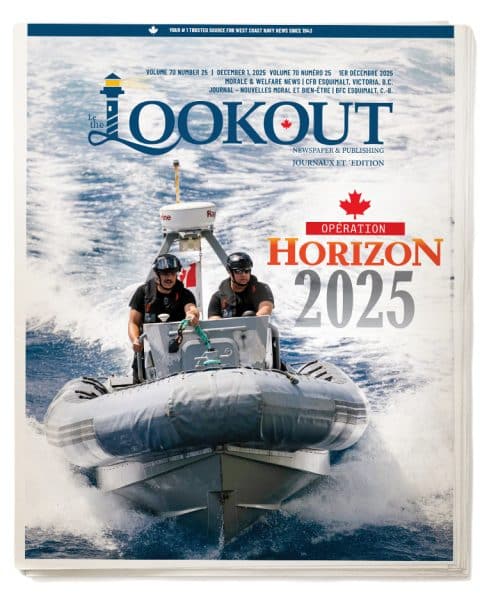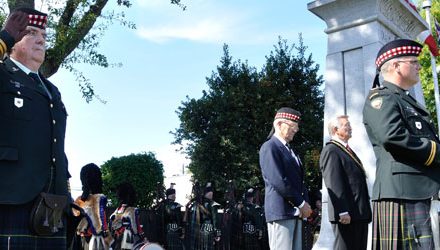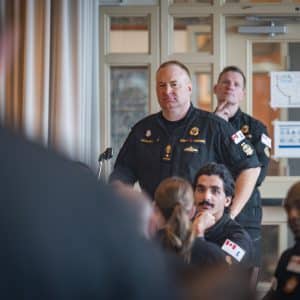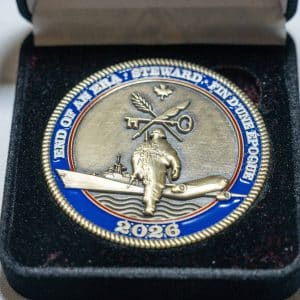
Sailor 1st Class Danny Dubeau performs diagnostics on the thermal couple sensor which monitors the temperature inside one of HMCS Vancouver’s gas turbine engines while at sea on the way to San Diego in June.
Kate Bandura,
Editor
—
As HMCS Vancouver slices through the Pacific waves en route to San Diego, Sailor 1st Class (S1) Danny Dubeau stands vigilant in the ship’s engine room. His mission: to ensure the warship’s powerful gas turbine engines continue to perform at peak efficiency.
“We depend on our Marine Technicians to keep the ship functioning, moving, and safe,” says S1 Dubeau.
The twin gas turbine engines are the core of HMCS Vancouver, capable of pushing the vessel to speeds over 30 knots. Alongside these behemoths sits a more fuel-efficient propulsion diesel engine, used for long-distance cruising and optimal fuel consumption.
S1 Dubeau’s work revolves around the ship’s Integrated Platform Management System (IPMS), a complex system monitoring every critical sensor onboard. The IPMS continuously monitors parameters such as temperature, pressure, and fluid levels across all ship systems, alerting technicians to any deviations from optimal ranges.
“Any time we have an indication a sensor is not functioning properly, we need to investigate and diagnose any potential problems,” he explains. “There is a range of temperatures optimal for operation. It’s crucial that we ensure the engines are running within those temperatures.”
Engine rooms are notoriously cramped and sweltering, with temperatures in the gas turbine enclosure reaching a scorching 500 degrees Celsius.
“You’re going to sweat when you’re a Marine Technician,” S1 Dubeau says.
Safety protocols are rigorous. The Machinery Control Room is always notified when engine room spaces are occupied. The crew has lock-out, tag-out procedures so that engines cannot be started while someone is working on them. For work in confined spaces, a secondary person acts as a sentry, ready to call for rescue if needed.
During critical periods, technicians may work up to 16-hour days to keep the ship operational. Maintenance levels on the ship are divided into three tiers based on complexity. Marine Technicians such as S1 Dubeau handle the first level, while higher levels are managed by specialists from General Electric, the manufacturer of the gas turbines.
“There are certain certifications attained by higher ranks such as Master Sailors and Petty Officers,” S1 Dubeau says, “but at the S1 level, most of our training is through on-the-job experience.”
When HMCS Vancouver is away visiting another port, Fleet Maintenance Facility personnel may fly out to help with maintenance and repairs to reduce maintenance at sea. Still, S1 Dubeau says maintenance is the best prevention.
“Never take shortcuts with your work – people are relying on you,” S1 Dubeau says.









